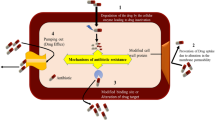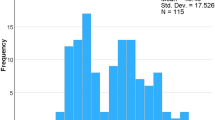Abstract
Escherichia coli O157:H7 infection is one of the more intriguing emerging infectious diseases of the industrialized world. The clinical importance of this organism first came to light in the 1980s and has been associated with significant morbidity and mortality in the United States. The infection is more common in industrialized countries than developing ones and is most closely associated with asymptomatic colonization of cattle. Fecal oral transmission is the rule, with the inoculum needed for infection much smaller than that required for E. coli-related travelers’ diarrhea. The organism can survive for months in the environment, and cross contamination is common. Watery diarrhea that progresses to bloody diarrhea without prominent fever is the classic presentation. The classic biopsy finding is similar to that of ischemic colitis, with acute inflammation and hemorrhage involving the superficial mucosa with preservation of the deeper crypts. E. coli O157:H7 has powerful Shigella-like toxins that are encoded by bacteriophages and can trigger thrombotic complications such as the hemolytic uremic syndrome or thrombotic thrombocytopenic purpura. The very young and the elderly are most at risk for serious disease and complications. Treatment with antibiotics has been reported to increase the risk for complications, but the evidence supporting this conclusion is unconvincing, with many variables affecting outcome in any one patient.
Similar content being viewed by others
References and Recommended Reading
Lewis M, Nataro J: Diarrhea caused by Escherichia coli. In Hunter’s Tropical Medicine and Emerging Infectious Diseases. Edited by Strickland GT. Philadelphia: WB Saunders; 2000:334–338.
Huang D, Okhuysen P, Jiang Z, et al.: Enteroaggregative Escherichia coli: an emerging enteric pathogen. Am J Gastroenterol 2004, 59:383–389.
Griffin P, Mead P, Sivapalasingam S: Escherichia coli O157:H7 and other enterohemorrhagic E. coli. In Infection of the Gastrointestinal Tract. Edited by Blaser M, Smith P, Greenberg H, et al.: Philadelphia: Lippincott Williams & Wilkins; 2002:627–642. An excellent review of the epidemiology, clinical picture, and pathophysiology of E. coli O157:H7 infection.
Tartasky D: Escherichia coli O157:H7. In Emerging Infectious Disease: Trends and Issues. Edited by Lashey F, Durham J. New York: Springer; 2002:129–137.
Crump J, Sulka A, Langer A, et al.: An outbreak of Escherichia coli O157:H7 infections among visitors to a dairy farm. N Engl J Med 2002, 347:555–560.
Moake J: Thrombotic microangiopathies. N Engl J Med 2002, 347:589–600. An excellent concise review of the pathophysiology of HUS and TTP.
Widiasih D, Ido N, Omoe K, et al.: Duration and magnitude of faecal shedding of Shiga Toxin-producing Escherichia coli from naturally infected cattle. Epidemiol Infect 2004, 132:67–75.
Beutin L, Krause G, Zimmerman S, et al.: Characteristics of Shiga toxin-producing Escherichia coli strains isolated from human patients in Germany over a 3-year period. J Clin Microbiol 2004, 42:1099–1108.
Watanabe M, Masuoka K, Kita E, et al.: Oral therapeutic agents with highly clustered globotriose for treatment of Shiga toxigenic Escherichia coli infections. J Infect Dis 2004, 189:360–368.
Grant M: Evaluation of methods to improve detection of Escherichia coli O157:H7 in fresh produce by multiplex polymerase chain reaction. J Food Prot 2003, 66:18–24.
Rahman H: Multiplex PCR for detection of stx genes of Escherichia coli. Indian J Med Res 2002, 115:251–254.
O’Brien S, Adak G: Escherichia coli O157:H7—piecing together the jigsaw puzzle. N Engl J Med 2002, 347:608–609.
Grif K, Dierich M, Karch H, et al.: Strain specific differences in the amount of Shiga toxin released from enterohemorrhagic Escherichia coli O157 following exposure to subinhibitory concentrations of antimicrobial agents. Eur Clin Microbiol Infect Dis 1998, 17:761–766. This animal model demonstrates that various strains of the O157 organism respond differently to antibiotic exposure in terms of amount of toxin produced.
Kurioka T, Yunou Y, Harada H, et al.: Efficacy of antibiotic therapy for infection with Shiga producing Escherichia coli O157:H7 in mice with protein calorie malnutrition. Eur Clin Microbiol Infect Dis 1999, 18:561–571.
Dundas S, Todd W, Stewart A, et al.: The central Scotland Escherichia coli O157:H7 outbreak: risk factors for the hemolytic uremic syndrome and death among hospitalized patients. Clin Infect Dis 2001, 33:923–931.
Wong C, Jelasic C, Habeeb R, et al.: The risk of hemolytic uremic syndrome with antibiotic treatment of Escherichia coli O157:H7 infections. N Engl J Med 2000, 342:1930–1936. This paper was one of the first to question the validity of the HUS-antibiotic connection in E. coli O157:H7 infection. The authors point out how small changes in affected patients could have major effects on study conclusions.
Safdar N, Said A, Gangnon R, et al.: Risk of hemolytic uremic syndrome after antibiotic treatment of Escherichia coli O157:H7 enteritis. JAMA 2002, 288:996–1001. This meta-analysis highlights the lack of data to support the widely held belief that antibiotic therapy is harmful in patients infected with E. coli O157:H7.
Slutsker L, Ries A, Maloney K, et al.: A nationwide case-control study of Escherichia coli O157:H7 infection in the United States. J Infect Dis 1998, 177:962–966.
Proulx F, Turgeon J, Delage G, et al.: Randomized controlled trial of antibiotic therapy for Escherichia coli O157:H7. J Pediatr 1992, 121:299–303.
Author information
Authors and Affiliations
Rights and permissions
About this article
Cite this article
Lawson, J.M. Update on Escherichia coli O157:H7. Curr Gastroenterol Rep 6, 297–301 (2004). https://doi.org/10.1007/s11894-004-0081-7
Issue Date:
DOI: https://doi.org/10.1007/s11894-004-0081-7




